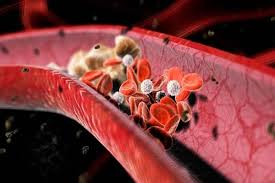Nano-biosensors in different protein and DNA cell detection systems (Nano-Micro PHD
Researcher and author: PhD student : Afshin Rashid
Note: Some biochemical nanosensors are manufactured using different types of nanoparticles for various medical applications. Not new magnetic particles immobilized as a platform in protein and DNA diagnostic systems for the separation, purification and detection detection process uses a combination of magnetic sensors are used giant.
Sensors have these unique features of portability, low cost, fast measurement and ease of integration into a single-use chip. Magnetic sensors are based on physical effects that relate an electrical resistor directly to an external magnetic field, namely the GMR, and the effect of the tunnel's magnetic resistivity on the ultrathin multilayer film stacks. These physical effects have been extensively investigated in the field of magnetic and rotational electronics due to their direct translation from magnetism to their scalability and size changes, which is consistent with standard complementary metal oxide semiconductor processing. Low to a concentration of about 10 pg / μL of DNA molecules, for example, is the magnetic resistance technique by standard analysis of nano molecules in the DNA of cells.

The structure of magnetic cell biosensors uses a quantum mechanical phenomenon in which a change in the local magnetic field changes the resistance and structure of the chemical biosensor. With regard to the distribution of spin-dependent in elaborately engineered magnetic multilayer or sandwich film. The particles are paramagnetic non-toxic ranging from particles Micro to Nanvayyz·h, the molecules of life that allows for the separation of biological cells is very special as well as methods of treatment such as target Medicine and childbirth, cancer therapies, imaging of lymph nodes and hyperthermia are related. Apart from magnetic iron oxide nanoparticles, superstar or ferromagnetic reaction and in-sensor nanoparticles may also be used for separation and treatment. Magnetic sensors are attractive for detecting biomolecules because nanoparticles can be displaced using a magnetic field gradient. And optimized its use in different nanosystems of protein and DNA cell detection.

Internal structure of nanosensors (biochemicals) in different protein and DNA cell detection systems
The structure and structure of chemical biosensors ( protein and DNA cell detection) is a type of sensitive circuit architecture that is scalable to larger sensor arrays and allows real-time tracking for clinical diagnosis. They used a sensor 1 in 1.2 cm custom sensor to sensor 300 micrometers, which contains an array of eight and eight sensor rotation valve is used. Each sensor has a surface area of 90 by 90 microns, which is made by combining parallel sets of magnetic nanosensor strips in series to adjust the coating surface independently of the resistor with a maximum applied voltage in the range of 0.5. V To prevent breakage of the inactive thin film The sensor uses paramagnetic particles ranging from micro- to nanoparticles that are linked to various biomolecules capable of detecting highly specific proteins.

Nano-sensors (biochemicals) in different cell and protein detection systems
In the detection of proteins using smaller particles, the magnetosandwich assay performance is increased due to the dynamic range and sensitivity, but the detection limit is due to the large amount of non-specific background, especially for the smallest particles of 125 nm, using this problem. A more precise blocking method of detecting S100ββ, a cellular diagnostic marker in the sensor structure , however, smaller particles may produce a smaller magnetic response due to lower magnetization, resulting in an interchange between the non- uniform size of the magnetic particle for signal generation. Magnetic and performance measurement.
Conclusion:
Magnetic biochemical nanosensors provide rapid, sensitive, and unprecedented methods for detecting important disease markers. With proper selection of non- New magnetic particles , can be substantial degree of clustering that resulted in non-sensitive magnetic sensor using a strong blocker prevented. In addition, smaller particles increase sensitivity and a wider dynamic range of concentration. However, smaller particles may exhibit a lower magnetic response due to lower magnetization, which is a trade-off between the depleted size of magnetic particles for magnetic signal generation and for sensing performance.
Author: Engineer Afshin Rashid
PhD student of Nano-Microelectronics at Islamic Azad University, Science and Research Branch, Tehran


